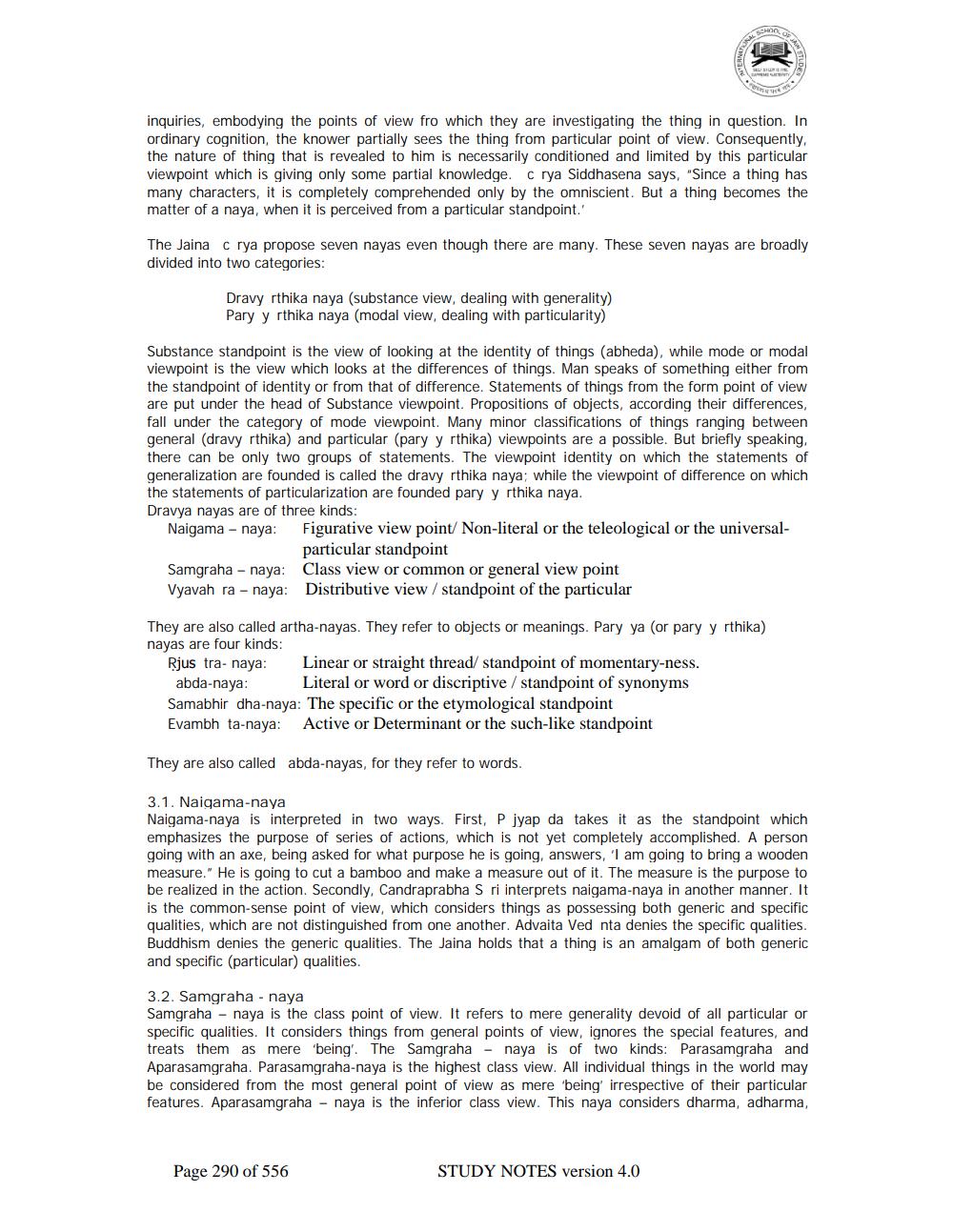________________
inquiries, embodying the points of view fro which they are investigating the thing in question. In ordinary cognition, the knower partially sees the thing from particular point of view. Consequently, the nature of thing that is revealed to him is necessarily conditioned and limited by this particular viewpoint which is giving only some partial knowledge. c rya Siddhasena says, "Since a thing has many characters, it is completely comprehended only by the omniscient. But a thing becomes the matter of a naya, when it is perceived from a particular standpoint.'
The Jaina c rya propose seven nayas even though there are many. These seven nayas are broadly divided into two categories:
Dravy rthika naya (substance view, dealing with generality) Pary y rthika naya (modal view, dealing with particularity)
Substance standpoint is the view of looking at the identity of things (abheda), while mode or modal viewpoint is the view which looks at the differences of things. Man speaks of something either from the standpoint of identity or from that of difference. Statements of things from the form point of view are put under the head of Substance viewpoint. Propositions of objects, according their differences, fall under the category of mode viewpoint. Many minor classifications of things ranging between general (dravy rthika) and particular (pary y rthika) viewpoints are a possible. But briefly speaking, there can be only two groups of statements. The viewpoint identity on which the statements of generalization are founded is called the dravy rthika naya; while the viewpoint of difference on which the statements of particularization are founded pary y rthika naya.
Dravya nayas are of three kinds:
Naigama - naya:
Samgrahanaya: Vyavah ra - naya:
Figurative view point/ Non-literal or the teleological or the universalparticular standpoint
Class view or common or general view point Distributive view / standpoint of the particular
They are also called artha-nayas. They refer to objects or meanings. Pary ya (or pary y rthika) nayas are four kinds:
Rjus tra- naya:
Linear or straight thread/ standpoint of momentary-ness. abda-naya: Literal or word or discriptive / standpoint of synonyms Samabhir dha-naya: The specific or the etymological standpoint Evambh ta-naya: Active or Determinant or the such-like standpoint
They are also called abda-nayas, for they refer to words.
3.1. Naigama-naya
Naigama-naya is interpreted in two ways. First, P jyap da takes it as the standpoint which emphasizes the purpose of series of actions, which is not yet completely accomplished. A person going with an axe, being asked for what purpose he is going, answers, 'I am going to bring a wooden measure." He is going to cut a bamboo and make a measure out of it. The measure is the purpose to be realized in the action. Secondly, Candraprabha S ri interprets naigama-naya in another manner. It is the common-sense point of view, which considers things as possessing both generic and specific qualities, which are not distinguished from one another. Advaita Ved nta denies the specific qualities. Buddhism denies the generic qualities. The Jaina holds that a thing is an amalgam of both generic and specific (particular) qualities.
Page 290 of 556
3.2. Samgraha - naya
Samgrahanaya is the class point of view. It refers to mere generality devoid of all particular or specific qualities. It considers things from general points of view, ignores the special features, and treats them as mere 'being'. The Samgraha - naya is of two kinds: Parasamgraha and Aparasamgraha. Parasamgraha-naya is the highest class view. All individual things in the world may be considered from the most general point of view as mere 'being' irrespective of their particular features. Aparasamgraha - naya is the inferior class view. This naya considers dharma, adharma,
STUDY NOTES version 4.0




